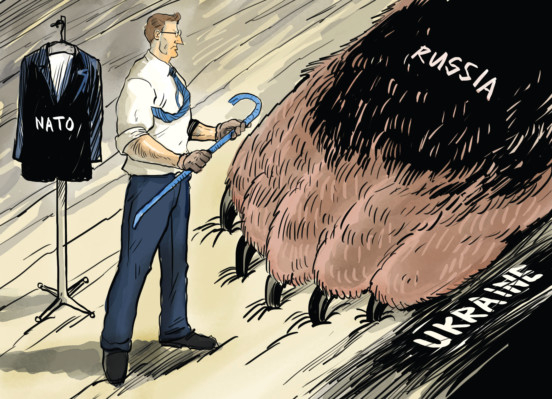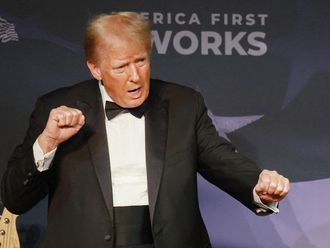
Leaders from 28 countries are preparing for a landmark Nato summit from September 4-6 in Wales that will map the way ahead for the military alliance. A quarter of a century after the end of the Cold War, Secretary General Anders Fogh Rasmussen asserts the meeting takes place at another turning point in international relations and is “one of the most important” in Nato’s 65-year history. While the summit has a broad focus, which includes Afghanistan, top of the agenda is Russia. Following Moscow’s annexation of Crimea, and the downing of Malaysia Airlines Flight 17 over Ukraine, the military alliance’s relationship (and that of the wider West) with Russia is at its lowest point since the Cold War.
Nato summits are not regular meetings, but instead key moments in the military alliance’s evolution and decision-making. For instance, the first post-Cold War summit of the military alliance was held in London in 1990 and included measures for enhancing relations with Central and European countries — many of which have subsequently become Nato members. Twenty-five years on, there is genuine alarm in some quarters about the West’s capability to respond to what is perceived as a significantly enhanced Russian security threat. Earlier this month, for instance, the UK House of Commons Defence Committee released a hard-hitting report that depicts recent events as a “wake-up call for Nato”, especially following Moscow’s earlier decision to invade Georgia in 2008, and launch a cyber attack on Estonia in 2007.
The study points to “serious deficiencies” in the military alliance’s preparedness and asserts “radical reform” is needed. Amongst the measures that it calls for include: A continuous detail of Nato troops in “vulnerable” Baltic states, including Estonia, Latvia and Lithuania; “dramatic” improvements in rapid reaction forces; and adding unconventional threats (e.g. cyber attacks and irregular militia attacks) to Nato’s Article 5 security commitments that require member states to come to the aid of any counterparts subject to attack.This agenda overlaps with that under discussion at the summit, but is not identical. In Wales, a series of reforms will be discussed by the 28 countries, including an Alliance Readiness Action Plan to improve the military alliance’s collective defence.
Whereas Russia has increased defence spending by some 80 per cent since 2008, the counterpart figure for Nato countries collectively is a decrease of around 20 per cent. Thus, there will be a particular stress at the summit for members to end recent rounds of defence cuts. Today, the US accounts for around two thirds of total Nato defence spending. European countries will therefore be urged, yet again, to meet guidelines for spending 2 per cent of GDP on defence. A key part of the new readiness action plan is bolstering the top 16 capabilities Nato will need to better meet present and future security challenges. These include intelligence, reconnaissance, surveillance, missile defence and cyber security.
Prompted by alleged Russian violation of the Intermediate-Range Nuclear Forces (INF) Treaty, which was agreed to reduce the potential threat of short-warning attacks, nuclear weapons will be discussed in Wales. Reportedly, Washington has told Nato allies that Moscow has breached its INF obligations by testing a ground-launched cruise missile.
Core component
While Moscow denies the charges, western perceptions of this alleged violation of the INF treaty are likely to bolster those within Nato who favour a continued significant role for nuclear weapons in the alliance. To be sure, the role of nuclear weaponry within Nato’s collective military arsenal remains controversial in some western quarters, especially the significant number of US nuclear weapons that remain forward deployed in Europe.
However, at the last Nato summit in Chicago in 2012, all members committed to nuclear weaponry as a “core component of Nato’s overall capabilities for deterrence and defence” after earlier divisions over forward deployed weapons. It is unlikely this position will change in the short-to medium term given the heightened threat Russia is perceived to pose, and the generally strong support of newer Nato members for the US nuclear umbrella in Europe.
Aside from Russia, the future of the military alliance’s operations in Afghanistan is also on the agenda. There remains uncertainty over this mission post-December with June’s Afghan presidential election still unresolved owing to allegations of voting irregularities.
Until a new president, either Ashraf Gani or Abdullah Abdullah, is formally declared the winner in coming weeks, a new security treaty cannot be agreed to sustain Nato’s presence in Afghanistan from January onwards. Reportedly, a new security deal with Kabul would see a remaining international force of around 14,000 troops in 2015, which could be reduced significantly in 2016.
The 2015 force will reportedly be comprised of an estimated 8,000 US personnel, and some 4,000 Nato troops, supplemented by a reported 1,800-strong US counter-terrorism force. This continuing international presence will also help ensure extensive funding and training for the approximately 350,000-strong Afghan police and military forces, which may otherwise disintegrate.
A third key theme of the summit is agreement of a Nato Defence Capacity Building initiative for countries (including potentially partners in Eastern Europe) that request security advice and/or assistance. The broad scope of possible support proposed in this initiative ranges from civil emergency planning, security sector reform, defence planning, defence reform, and military training.
The ambition here is to bolster Nato’s global engagement, including potentially with large, emerging economies such as Brazil, China and India which are playing increasingly important security roles. One specific regional area of focus is anticipated to be Africa and the Middle East where multiple countries in those regions, with unreformed defence sectors, are struggling with a range of security challenges.
Taken overall, the summit represents a key opportunity for Nato to agree to a reform package that provides enhanced strategic direction for the next 5-10 years. Leaders from the 28 member countries will want to discuss the outlines of a long-term response to Russian actions in Ukraine; try to finalise the post-2014 mission in Afghanistan; and also agree a new global engagement strategy.
Andrew Hammond is an Associate at LSE IDEAS at the London School of Economics and a former UK Government Special Adviser.









